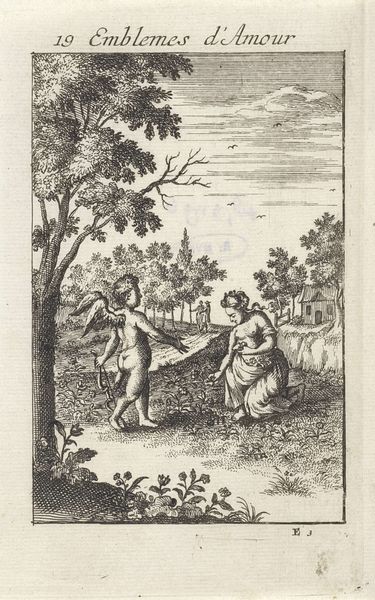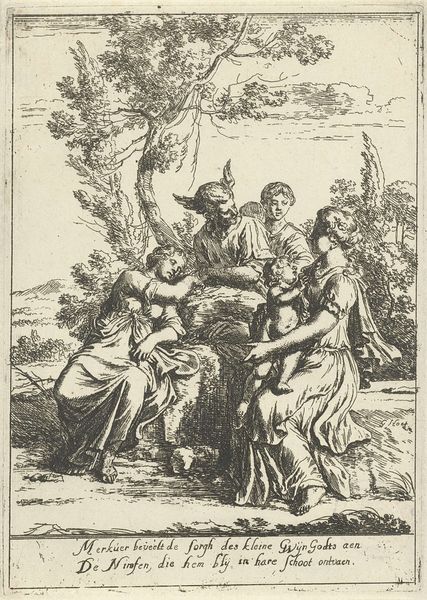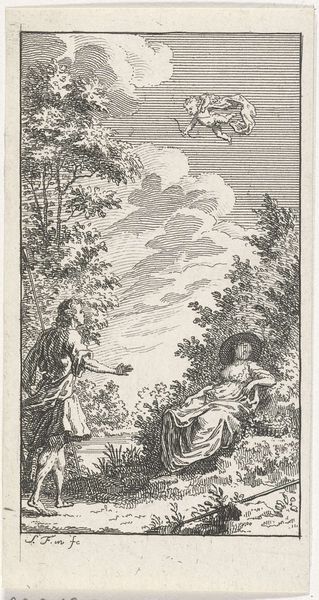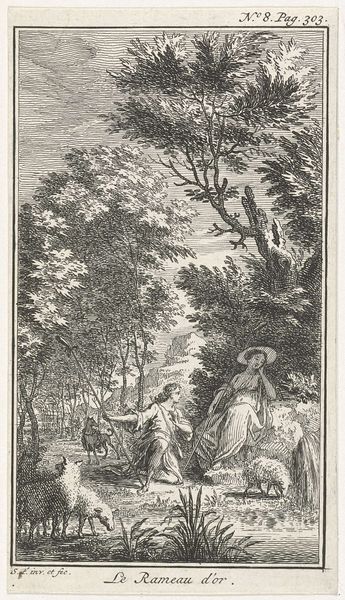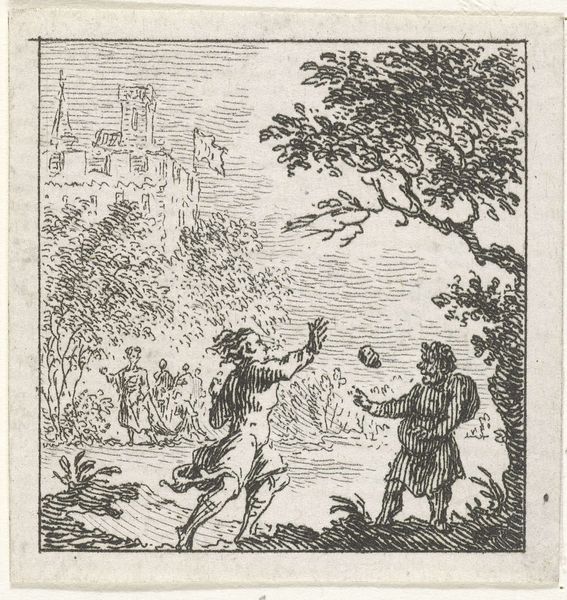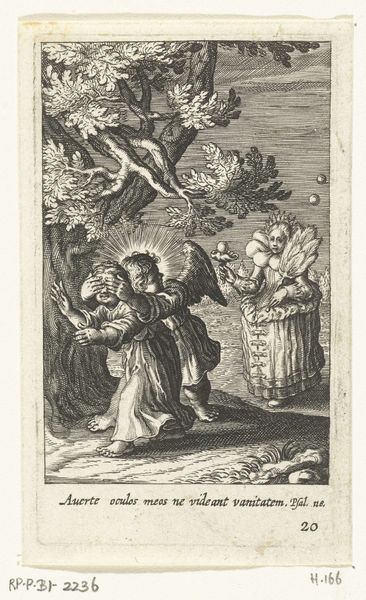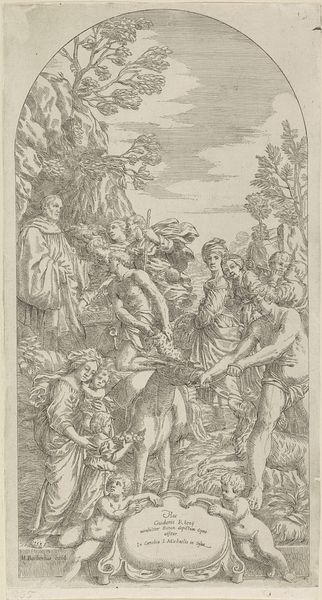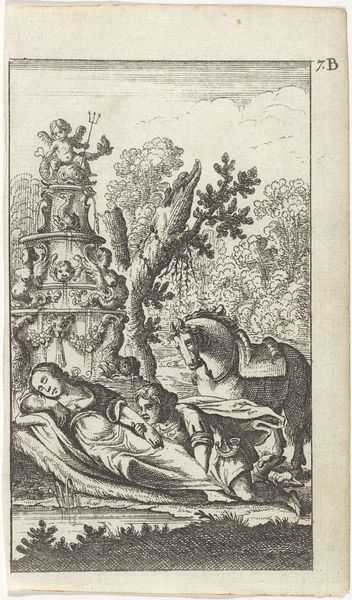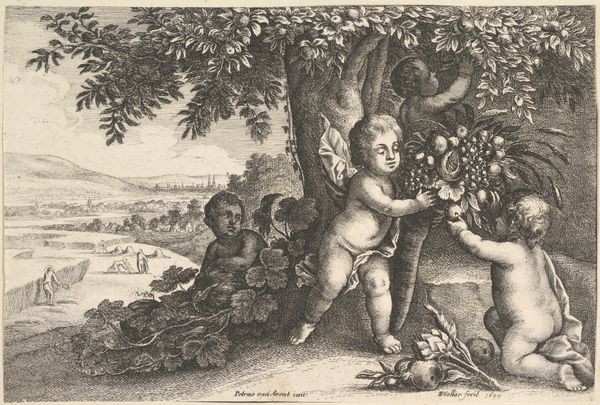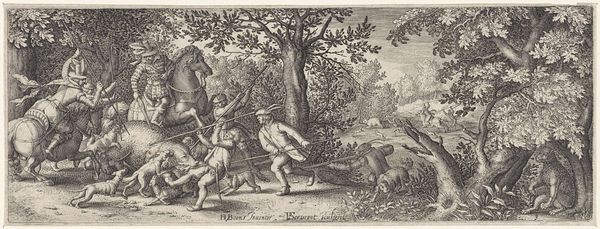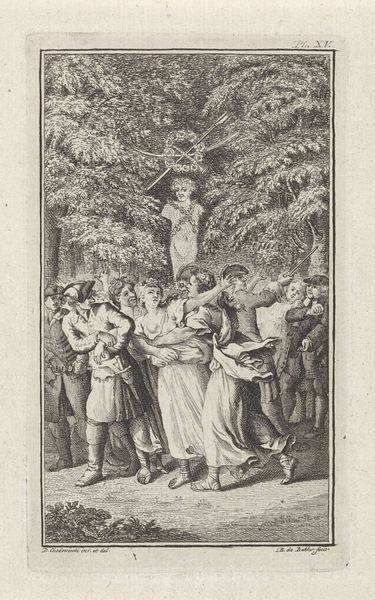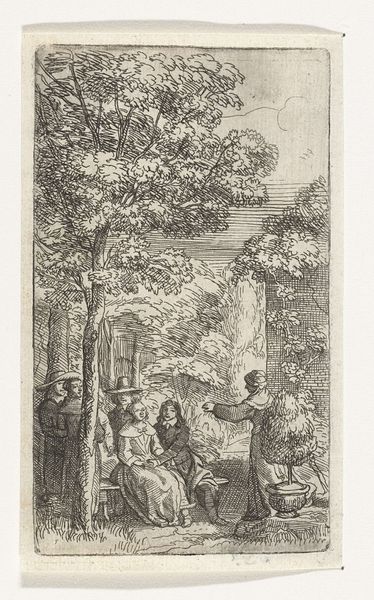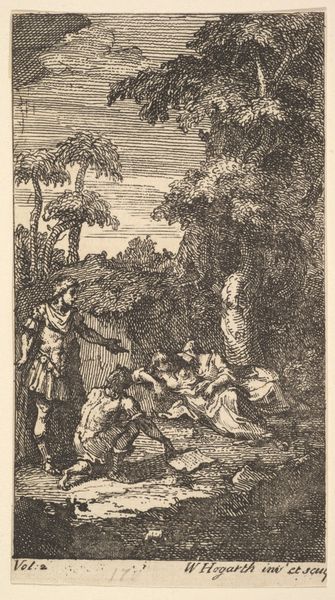
drawing, ink, pen
#
drawing
#
baroque
#
figuration
#
ink
#
pen
#
genre-painting
#
history-painting
Dimensions: height 130 mm, width 76 mm
Copyright: Rijks Museum: Open Domain
Curator: This detailed ink and pen drawing, currently held at the Rijksmuseum, is titled "Man beschermt twee vrouwen tegen een aanval," created by Abraham Dircksz. Santvoort around 1667. Editor: There's an immediate sense of chaos and urgency in this image; the dark lines convey the distress and potential violence of the scene. The protective gesture of the man seems almost futile against the approaching armed men. Curator: Santvoort's choice of medium lends itself well to the dramatic scene. It invites us to reflect upon narratives of gendered violence within 17th century Dutch society. Editor: I wonder about the role the social climate of the period played in its creation. Was it conceived during a time of perceived or actual threat? This sort of scene echoes in other works, pointing to concerns about safety and protection. The imagery of the vulnerable woman rescued by a brave male figure carries heavy patriarchal baggage that’s difficult to ignore. Curator: It is definitely hard to deny the historical gender roles at play here, especially when one considers the positioning and vulnerability of the female figures being shielded. Further investigation into the context of Abraham Dircksz. Santvoort's patronage might elucidate some aspects of the picture's intention and public meaning, giving us an insight into the complex layers embedded in the narrative. Editor: The institutional setting where we find it – the Rijksmuseum – inevitably shapes its reception. What messages do institutions reinforce by choosing to display works like these, particularly given their problematic depiction of gender dynamics? Curator: Those considerations are definitely an active part of the ongoing conversation surrounding the artwork. It encourages us to continuously interrogate the values and power structures it reflects and reinforces, allowing us a fuller understanding of intersectional impacts throughout its time. Editor: Absolutely. This is another crucial point to underline. Reflecting on those factors adds dimensions that we wouldn’t normally think about.
Comments
No comments
Be the first to comment and join the conversation on the ultimate creative platform.
